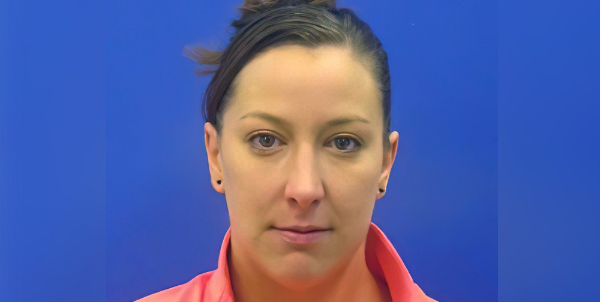
Internal police documents regarding the shooting and killing of Air Force veteran Ashli Babbitt by a Capitol police officer during the ruckus on Jan. 6 – those acts of vandalism that Democrats have described as being worse than 9/11 – show there was no reason for her to die.
That’s according to government watchdog Judicial Watch, which obtained copies of the documents through a Freedom of Information Act fight.
Fox News reports the watchdog obtained more than 500 pages of internal documents from D.C. Metropolitan Police regarding Babbitt’s shooting.
They reveal witness accounts stating she was not holding a weapon at the time of her death.
And they reveal that the officer who fired the fatal shot was “upset” after.
“These previously secret records show there was no good reason to shoot and kill Ashli Babbitt,” said Judicial Watch chief Tom Fitton.
“The Biden-Garland Justice Department and the Pelosi Congress have much to answer for the over the mishandling and cover-up of this scandalous killing of an American citizen by the U.S. Capitol Police.”
Babbitt was among those who entered the building, sometimes through broken doors and windows, sometimes through doors held open by security officers, that day. They were protesting the plans for Congress to adopt the suspicious 2020 presidential election race results that gave the White House to Joe Biden.
Those results still remain the subject of various audits that focus on, among other allegations, the fact that state and local officials sometimes changed state law for ballots even though they were not authorized to do that. Further, Facebook’s Mark Zuckerberg handed out nearly $420 million to two activist groups that then turned the money over to local elections officials with instructions that they use it mostly for recruiting voters from Democrat neighborhoods, an investigation revealed.
The officer who fired the shot was Capitol Police officer Lt. Michael Byrd, who faces no punishment or charges for the killing.
The report explained the documents showed “witnesses did not see Babbitt holding a weapon prior to her being shot, and reveal conflicting accounts of whether Byrd verbally warned Babbitt before shooting her.”
“Sergeant [redacted] observed a white, female protester was climbing through an opened area where the glass pane had been knocked out. He heard a gunshot and this female fell backwards through the opening. The crowd on the other side of the barricaded east doors, began to step back and some put their hands in the air. Sergeant [redacted] observed Lieutenant Byrd step back just after hearing the gunshot. He did not see anything in the female protester’s hands prior to the gunshot,” the police documents confirmed.
“Sergeant [redacted] never went on the other side of the barricaded east door. He also did not know that it was Lieutenant Byrd who shot his gun until he talked to him moments after it occurred. Lieutenant Byrd looked upset and stated, ‘I was the one who took the shot.'”
The sergeant told investigators he was not sure if “something” happened that caused Byrd to kill the protester.
“Uh, I saw Lieutenant Byrd kinda. I don’t know if it was before or after. Cause I was trying to figure this out of, but there was at one point where I remember seeing him and he kind of went like this and then came back up again. Uh, I don’t know if that was from him taking the shot and then stepping back from that shot or if it was before that, I can’t, no matter how I tried to rack my brain, I can’t, I can’t figure out when that happened, but uh, so I don’t know if something happened to him where [sic] caused him to take the shot or not,” the documents show he said.
Byrd was, however, upset after the shooting.
“No, his eyes were red. He was, you could see he was visibly upset and he just, you know, kind of comfort him and told him, you know, we gotta get outta here,” the interview transcript shows.
The paperwork also shows another Capitol Police officer who was directly behind Byrd at the time said he “did not see Ms. McEntee [Babbitt] in possession of any potential weapons.”
Other reports have said people who were there did not hear any verbal commands or warnings from the officer before the shot, although he said he did verbalize such a warning. Still others offered contradictory conclusions.
Byrd claimed, in his own testimony, that he “saved countless lives” that day.
“I know members of Congress, as well as my fellow officers and staff, were in jeopardy and in serious danger,” he said.
A blog posting at Red Voice Media said the documents “vindicated” Babbitt.
“In these documents, witnesses stated that Babbitt was not holding a weapon at the time of her death and that the officer who shot her was noticeably ‘upset’ afterwards,” the posting said.
WND reported that Judicial Watch sued for the records after the Executive Office for United States Attorneys, the Civil Rights Division, and the Federal Bureau of Investigation all failed to provide the records responsive to Judicial Watch’s April 14, 2021 and May 20, 2021, FOIA requests.
WND also previously report Babbitt’s widower, Aaron Babbitt, had words for Byrd, who complained he’s gotten death threats since he killed Babbitt.
“Suck it up,” Aaron Babbitt said to Byrd.
“I don’t even want to hear him talk about how he’s getting death threats and he’s scared,” Aaron Babbitt said during an interview on Fox News’s Tucker Carlson, according to a report in the Washington Examiner.
Aaron Babbitt cited his own experience since Byrd shot his wife, who was killed when she became part of a crowd that broke windows and doors at the Capital to enter that day.
Via Wnd
